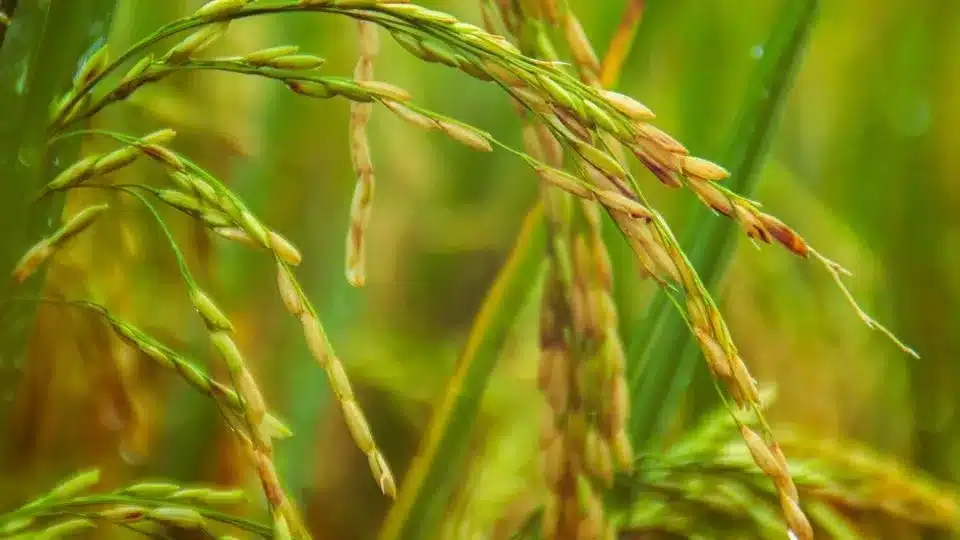Tags
Rice Has a Goldilocks Problem
Too much or too little water hurts the crop, and changing climate is causing both conditions

A farmer works in a rice paddy field on the outskirts of Guwahati, India, Tuesday, June 6, 2023. (AP Photo/Anupam Nath)
Rice is essential to feeding the planet, but climate change is forcing farmers to adapt as heat and flooding reach extreme conditions. Per Modern Farmer, breeders and scientists are working toward that goal (an essential one to fighting hunger, with 20% of human calories consumed from rice). They write that rice is a little like Goldilocks in the “just right” department when it comes to water. Droughts deplete water needed to grow the thirsty crop, while being submerged in too much of it for too long because of flooding can kill it. This is bad news globally in places like India, Bangladesh, and Vietnam, where flash floods and tsunamis are occurring more often, as well as in drought-prone regions such as California.
But solutions, including breeding varieties that withstand these conditions in test fields, are being explored across the world. “Breeding rice is a formidable task,” says JJ Jiang of Lundberg Family Farms in California. There, adjusting their 40 breeds of rice to withstand worsening drought has become an ongoing practice. Meanwhile, scientists like plant pathologist Pamela Ronald at the University of California, Davis, are developing rice with higher submergence tolerance. Her lab found the gene to help rice withstand longer periods in water, which has led to varieties used in India and Bangladesh today. About 4 million tons of rice are lost to flooding annually. CRISPR gene-editing technology also is being used to better understand diseases, and how rice plants can better fight them off.
Upper Midwest: In the US, warmer winters are contributing to the decline of wild rice in Michigan, Wisconsin, and Minnesota, where the crop (which is actually a grass) holds cultural significance to local tribes. According to Eos, the annual plant’s populations in lakes and rivers on reservations has declined 6-7% since the ’90s due to weed and other plant overgrowth, alongside higher water levels that disrupt rooting. Using tribal knowledge is essential to the process, says Indigenous consultant Bazile Panek, who notes that they have “been stewarding manoomin, or wild rice, since time immemorial.”
To the Northeast? Groups in regions that don’t traditionally grow rice, like the Northeast, are testing out how changing conditions may help them adopt it. “We don’t imagine this will be an overnight transition, because farmers would dedicate a small patch of their land to try rice first and see if that works, and gradually expand the scope of rice farming,” Cornell’s Chuan Liao tells the Cornell Chronicle. “So the transition will take some time.” Introducing rice paddies there can serve as a buffer for runoff, help migratory birds, and drive economic opportunities, like leading to a new distilleries for sake, or rice wine, in the Finger Lakes region. (Read more rice stories.)
https://www.newser.com/story/344571/rice-has-a-goldilocks-problem.htmlPublished Date: January 7, 2024






